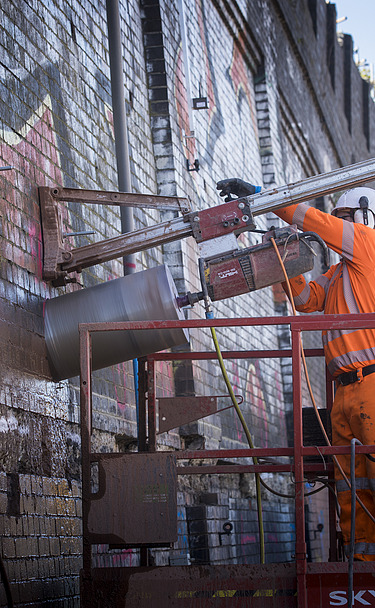

Client:
HS2 Ltd
Construction period:
2017 – ongoing
City/Country:
London, United Kingdom
HS2 London Tunnels and Approaches
United Kingdom
As part of the Skanska Costain STRABAG joint venture (SCS JV) working in partnership with HS2, STRABAG is delivering two design-and-build contracts for the Euston and Northolt Tunnel approaches. This involves the construction of 48 km of twin-bore tunnels for a high-speed railway using seven tunnel boring machines and multi-discipline civil engineering works with a focus on safe, sustainable and innovative construction and engineering solutions.
Environmental and social responsibility
With this highly complex project operating in both suburban and central London, we are committed to minimising the disruption to local communities, businesses and the environment.
One of the major challenges of such a large-scale inner-city project is the removal of extracted material and delivery of huge segments for the tunnels. This is where the SCS JV logistics hub is so crucial. To avoid using local roads, a nine-mile conveyor system has been constructed over rail bridges, roads and canals to transport excavated material from Old Oak Common station to the logistics hub, where it is then loaded onto trains and transported out of London. Using trains eliminates the need to use heavy goods vehicles, simultaneously reducing traffic and lowering our CO2 emissions. Excavated material from the tunnel boring machines is then used to create embankments and to refill a former quarry site in Cambridgeshire.
A specialist logistics tunnel has also been constructed between the logistics hub and Old Oak Common station to service the programme constructing the line towards Euston. This will ensure materials for the Euston Tunnel can be transported to the site without using local roads or disrupting other work at Old Oak Common station.
Some of the pioneering work to minimise impact on the local communities include the development of an AI “MudCam”, which uses video analytics to detect mud on roads. This allows the team to address potential safety risks of mud and debris build-up. A new method of removing waste concrete from piles at the Euston sites has also been developed, which allows the team to significantly reduce the impact of noise and dust in residential areas.